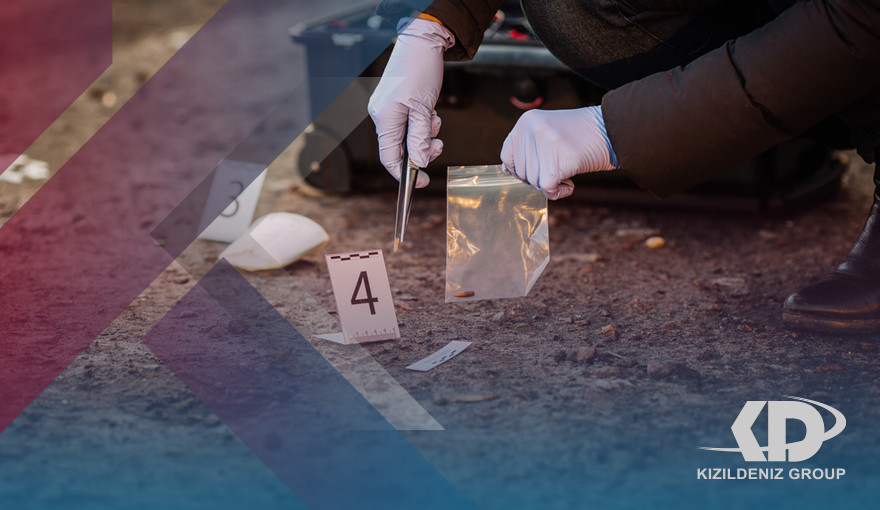What is the specialty of Criminology and Crime Scene Investigation:
The purpose of a crime scene investigation is to help establish what happened (crime scene reconstruction) and to identify the person responsible. This is done by carefully documenting the circumstances of the crime scene and identifying all relevant physical evidence. The ability to correctly identify and collect physical evidence is often critical to solving violent crimes and prosecuting perpetrators. It is not an exaggeration to say that in most cases, the law enforcement officer who protects and searches crime scenes plays a critical role in determining whether physical evidence is to be used in solving or prosecuting violent crimes.
Despite the portrayal of Hollywood, crime scene investigation is a difficult and time-consuming business. There is no substitute for a careful and thoughtful approach. The investigator must not jump to an immediate conclusion of what happened based on limited information but must generate several different theories of the crime, keeping the theories that have not been eliminated with the information provided at the crime scene. Reasonable conclusions about what happened are obtained from the appearance of the scene and information from witnesses. These theories will help guide the investigator to document specific circumstances and learn valuable evidence.
Documentation of crime scene conditions can include immediate recording of transient details such as lighting (on/off), curtains (open/closed), weather, or furniture moved by medical teams. Some evidence such as shoe prints or gunshot residues are fragile and if not collected immediately can easily be destroyed or lost. The scope of the investigation also extends to considerations of the arguments that may arise in this case (suicide/self-defense) and the documentation of circumstances that would support or refute these arguments.
In addition, it is important to be able to recognize what should be in the scene but not (the victim's vehicle/purse) and what appears to be out of place (the ski mask) and possibly left by the attacker. It is also important to determine the full scope of the crime scene. A crime scene is not just the immediate area where the body is located or where the attacker focused his activities but can also include a vehicle and access/escape routes.
Although there are common items frequently collected as evidence (fingerprints, shoe prints, or bloodstains), just about anything can be physical evidence. Anything that can be used to connect the victim to the suspect, or the suspect to the victim or crime scene is appropriate physical evidence. Using a "shopping list" approach (collecting all bloodstains, hair, or shoe prints) likely won't yield the best evidence. For example, the collection of bloodstains under the victim's body or shoe prints from emergency personnel rarely answer important questions. Conversely, a single matchstick (which is not usually mentioned as physical evidence) found on the ground near the victim's body can be excellent physical evidence because it can be attached directly to a book of matches found in the suspect's pocket.
Since a weapon or burglary tool is easily identifiable as important physical evidence, it is usually destroyed by the perpetrator. Sometimes the only evidence left is microscopic evidence consisting of hair, fibers, or other small traces that the attacker leaves behind or takes with them without their knowledge. Although this evidence is effectively collected when the clothes of the victim or suspect are taken, protocols (including tape lifting) must be established for handling naked bodies so that this fragile evidence is not lost.
History of Criminology and Crime Scene Investigation:
The first crime laboratory for the police was established in 1910 in Lyon, France, by Edmond Locard. According to Lockard's "Principle of Reciprocity," it is impossible for criminals to escape a crime scene without leaving archeological evidence that can be used to identify them. This principle gave rise to forensic science, the cumulative methods of developing and analyzing physical evidence from crime scenes. Crime scene investigation, which is often conducted by experts known as crime scene investigators (CSIs), involves careful collection of such evidence, which is then analyzed in a crime lab. In some cases, evidence collected by CSI and analyzed by forensic experts is the only indisputable evidence presented at trial.
The importance of studying Criminology and Crime Scene Investigation:
There are several reasons why criminology is so important:
Crime Reduction: Criminology helps society understand, control, and reduce crime. The study of crime helps to discover and analyze its causes, which can be used in crime reduction policies and initiatives.
Helps understand the mindset of criminals: Criminology helps to understand the mindset of criminals, why they commit crimes, and the factors that affect them. This helps in proper allocation of resources to control crime.
Reform of criminals: In addition to reducing and controlling crime, criminology can also suggest appropriate measures to rehabilitate criminals.
subjects for Criminology and Crime Scene Investigation:
- Sociological theory
- deviation and crime control;
- Contemporary issues in criminology.
Fields of work for the for Criminology and Crime Scene Investigation:
- Crime scene commander.
- Crime scene photographer.
- Evidence collector.
- CSI technician.
- Firearms / DNA / Toolmark / Fingerprint Specialists.
- Forensic artist.
The best universities to study Criminology and Crime Scene Investigation in Turkey:
- istanbul Üsküdar University
 FR
FR AR
AR
 Next one
Next one